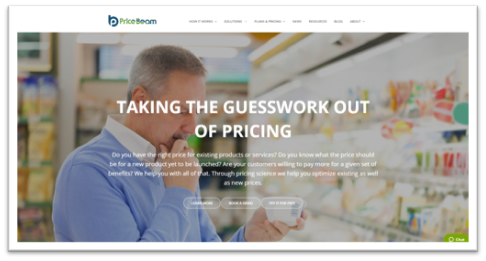Moral Hazard in Pricing: Know your customer's price sensitivity?
 PriceBeam
·
2 minute read
PriceBeam
·
2 minute read
The concept of price sensitivity tells us that, generally, a price increase will cause your most price-sensitive customers to start looking for alternatives as their willingness-to-pay no longer exceeds the value they place on your product or service. But just how price-sensitive are your customers? This will, to some extent, depend on the number of substitutes available, and therefore it is crucial to understand who your customers are and if they do, in fact, have any substitutes available to them.
Know the Buyers from the Deciders
It is not always the case that the person who buys a product or service is the one that decides who to buy from. You may have experienced this yourself if you have ever taken prescription medication; The doctor performs a diagnosis and chooses the medication she finds most effective for treating your symptoms. She considers previous experience with similar patients or possible side effects, but she won’t consider the price of the drug! You’re the one swiping your credit card at the pharmacy later, so why would she?
This is a case of moral hazard, where the doctor is the Decider, who makes the purchase decision while keeping her money in the pocket, and the patient is the Buyer, who doesn’t have any influence on the purchase decision but carries the entire cost burden.
What Moral Hazard can mean for your business
Look at the example above, and consider whether this could apply to your product or service? Your product may be targeted at children or tweens that pay with their parents’ money? Or large firms where representatives are Deciders, and subsequently pass on the bill to the firm? If so, it’s time to reap the rewards!
In the presence of moral hazard, the cost burden isn’t levied on the Deciders and thus the demand is very inelastic. In other words, you can increase your prices quite substantially without suffering significant losses of output - and that’s great for business!
For illustration purposes, let’s have a look at how publishers of university textbooks have benefitted from the moral hazard that occurs when students (the Buyer) pay for the decisions made by their university professors (the Decider);
 Just like the doctor, the university professor considers a variety of factors when choosing which book to assign - just not the price!
Just like the doctor, the university professor considers a variety of factors when choosing which book to assign - just not the price!
The publishers can increase prices without influencing the professor who decides what textbooks to use in her course, while the student is left with no substitutes available and thus little bargaining power. Consequently, textbook prices have increases by more than 3 times the rate of the general US Consumer Price Index over the last 30 years; yet the otherwise very price-sensitive students keep buying them.
WATCH OUT for Price Walls (!)
In this article, we have looked at how moral hazard can reduce the price sensitivity of some customer segments and allow companies to benefit substantially from increasing their prices. BUT - and this is an important “but” - that does not mean you should neglect thorough research of your customers’ willingness-to-pay before increasing your prices. While moral hazard may allow you to charge a higher price, hitting a price wall is equally dangerous and could result in immediate drops in sales and severe damage to your brand.
.png?width=400&height=100&name=PBLogoTransparent%20(1).png)




-1.png)